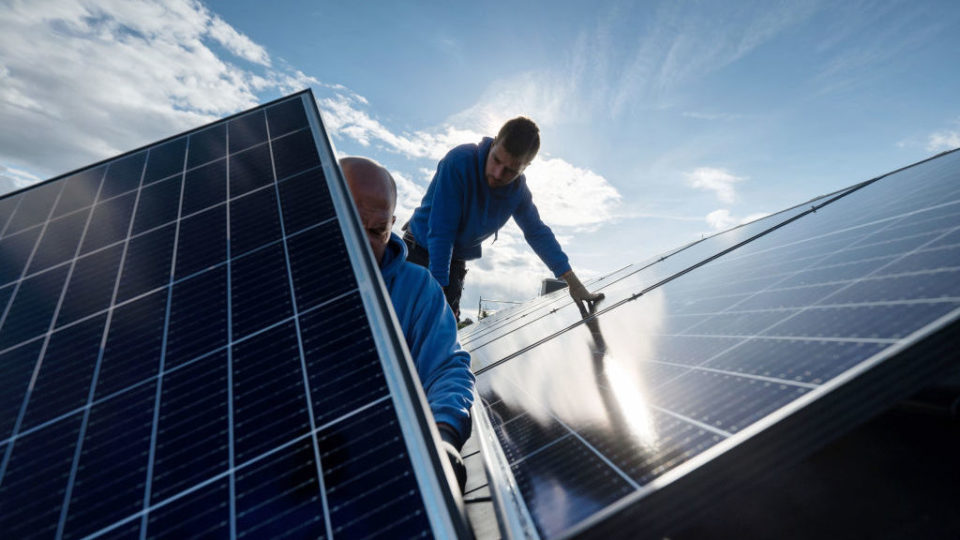With the recent rise in the price of natural gas in Europe to five times where it was in early 2021, expect to see many more Europeans and those in United Kingdom plunged into what’s known as “energy poverty.” From Greece to Great Britain and everywhere in between, the European electricity grid has increasingly been delinked from reliable affordable fossil fuels and hooked up to more expensive and intermittent wind and solar projects.
One result is that Europeans pay twice for generated electricity: once for the existing sunk costs of existing fossil fuel (and nuclear in some countries) projects and again for renewable-based electricity projects. Another result is that when wind and solar are not available, multiple nations in Europe and elsewhere are chasing the same available oil, natural gas and coal, pushing those fuel prices dramatically higher.
Canadians and indeed everyone else around the world should pay attention. That’s because what Europeans are enduring and will suffer through again this winter will intensify thanks to what governments worldwide are pushing at the 26th UN Climate Change Conference of the Parties (COP 26) at Glasgow, Scotland: An even faster assumed “phaseout” of fossil fuels.
But it is just that past policy preference which has caused substantial energy poverty in Europe even before the price spike this autumn. (For those unfamiliar with the term, energy poverty is all about citizens too poor to pay their utility bills on time and/or keep their homes adequately warm.)
Stephen Bouzarovski, a University of Manchester professor and chair of an energy poverty working group, estimated that pre-pandemic, 80 million Europeans were already struggling to adequately heat their homes. Meanwhile, at least 12 million European households were in arrears on their utility bills.
The European Union has attempted to provide an objective measurement of the problem but their best data is six years old. The EU Energy Poverty Observatory’s most recent estimate from 2015 showed that 16% of EU consumers faced a “high” share of energy costs. “High” was defined as the proportion of European households whose energy expenditures relative to income was more than twice the national median share (of energy expenditures relative to income).
To get a better sense of the challenge faced by European households and energy poverty, we used 2008 as a start year and then compared the rise in household median incomes (with the full set of data ending in 2019) with the rise in electricity prices (ending in 2020) in 30 European countries.
We found that for lower-income European countries that have seen strong growth in incomes since 2008 (mainly ex-communist states such as Estonia, Bulgaria and Poland as examples), most such states could handle the rise in power prices because median incomes rose faster.
This was not the case in mature countries where median incomes were already relatively high in 2008 but barely grew in the ensuing years, this while power prices zoomed up. For example, electricity prices jumped by 61% in France between 2008 and 2020 with median household income rising by just 19% (using 2019 as our end date given the limited data). The United Kingdom and Ireland saw a 51% and 48% rise in electricity prices in that period while incomes rose by just 14% and 11% respectively.
Worst off was Spain, where median household income was below more prosperous European states in 2008 (at €13,963 that year) and has barely grown since (to just €15,015 in 2019). Median household income thus rose by just 8% in the years available for comparison but electricity prices soared by 68%.
The response of some European governments to this has been to subsidize utility bills. But as with Ontario which does the same to mask the expense of past government policy which drove the province’s electricity prices dramatically higher, all that does is shift the burden of high power costs from the “consumer pocket” to the “taxpayer pocket.” Of course, it’s the same household that bears the cost, or their children and grandchildren if present-day utility bills are subsidized through government borrowing.
The source of high-cost electricity can be found in European Union and United Kingdom policy. Governments there have attempted to “transition” from fossil fuels despite their superior energy density (their “power punch” as Vaclav Smil, retired environment professor at the University of Manitoba characterizes it) vis-à-vis renewables.
The result can be seen in the declining share of fossil fuels in EU electricity production from about 50% in 2000 to 38% as of 2019, with nuclear-generated electricity also discouraged and declining from 32% in 2000 to just over 26% in 2019).
Meanwhile, renewables as a share of EU electricity production more than doubled, from just over 16% in 2000 to over 34% in 2019. That would be fine, except solar and wind are not inexpensive. They are also not as reliable as fossil fuels, something Brits just noticed again when wind power dropped and coal was again used to prop up that country’s electricity grid.
It’s been said that the definition of insanity is “doing the same thing over and over again and expecting different results.” It appears that policymakers are gathering in Glasgow to speed up killing fossil fuels, precisely what already led to massive energy poverty in Europe.
Mark Milke and Ven Venkatachalam are with the Canadian Energy Centre, an Alberta government corporation funded in part by taxes paid by industry on carbon emissions. They are authors of Energy Poverty in European Households: An Advance Lesson for Canadians.
The unaltered reproduction of this content is free of charge with attribution to Canadian Energy Centre Ltd.
